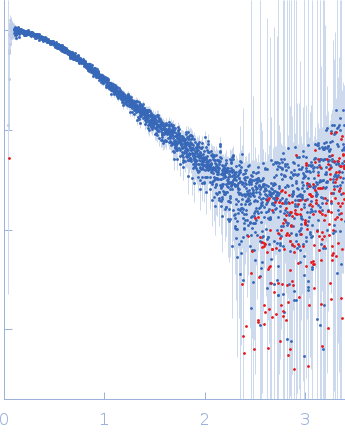| MWexperimental | 14 | kDa |
| MWexpected | 17 | kDa |
| VPorod | 22 | nm3 |
|
log I(s)
5.96×10-3
5.96×10-4
5.96×10-5
5.96×10-6
|
 s, nm-1
s, nm-1
|
|
|
|

|
|
|
Synchrotron SAXS
data from solutions of
K48-linked diubiquitin
in
20 mM HEPES, 100 mM NaCl, pH 7
were collected
on the
B21 beam line
at the Diamond Light Source storage ring
(Didcot, UK)
using a Eiger 4M detector
at a wavelength of λ = 0.1 nm
(I(s) vs s, where s = 4πsinθ/λ, and 2θ is the scattering angle).
In-line size-exclusion chromatography (SEC) SAS was employed. The SEC parameters were as follows: A 50.00 μl sample
at 4 mg/ml was injected at a 0.16 ml/min flow rate
onto a Shodex KW402.5-4F column
at 20°C.
One
3 second frame was collected.
The data were normalized to the intensity of the transmitted beam and radially averaged; the scattering of the solvent-blank was subtracted.
Sample detector distance = UNKNOWN |
|
|||||||||||||||||||||||||||